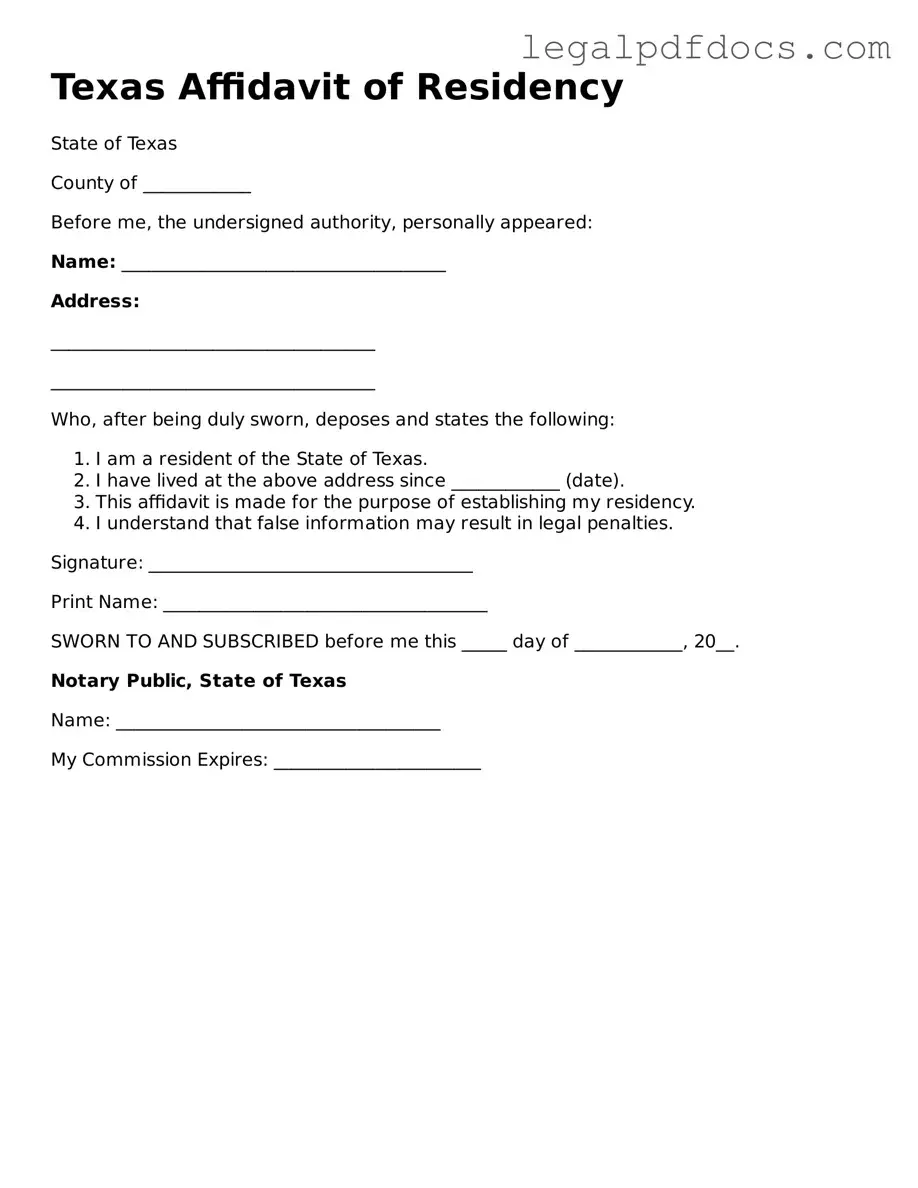Official Affidavit of Residency Form for Texas
The Texas Affidavit of Residency form is a legal document used to verify a person's residency in Texas. This form is often required for various purposes, such as enrolling in school or obtaining a driver's license. Understanding how to complete this form accurately is essential for ensuring compliance with state requirements.
Ready to fill out the Texas Affidavit of Residency form? Click the button below to get started!
Open Affidavit of Residency Editor Here
